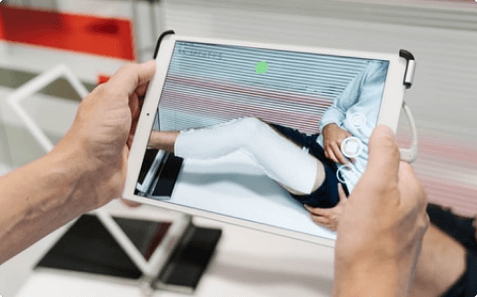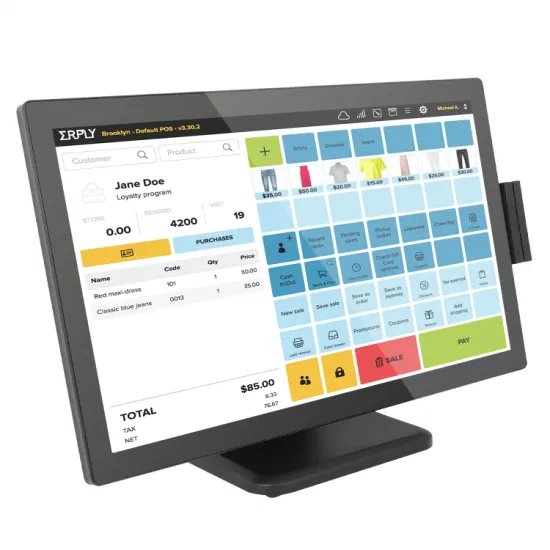
Reverse logistics is far more complex than forward logistics.
Brands must make a decision on their returns policy with retailers and the end consumer while also agreeing to an efficient returns policy with their supplier.
There are many factors that brands should consider in finding an efficient way to manage their RMA and doing so can help towards maximizing their profitability.
The big focus is on limiting the financial loss of the returned products.
Taking tablets as an example: they can be sent back to the manufacturing factories, sent to a professional domestic repair shop, fixed in-house or a combination of these.
The criteria to be considered by the brand when choosing their method include the costs, time and resources.
The first scenario is where the manufacturer sends the tablets to the brand and the brand deals with the returns domestically.
The brand can sort through the returned tablets for units that can be resold as refurbishments either in its original packaging or in special refurbishment packaging.
Any of the devices that couldn’t be resold to end users would then be sold for parts to repair shops or flogged on a website such as eBay.
This option is quite fast and doesn’t require many resources however there is a high potential loss of revenue for the tablets being sold as refurbishments and for the units that get sold for parts.
Depending on the brand’s resources they may be able to handle some or all of the repairs in-house.
If the brand could handle minor repairs to the tablet devices, such as changing the case or battery or formatting the device, they could repackage them and sell them back into retail channels.
Any tablets that cannot be repaired in-house would be sent to a more specialized domestic repair shop which is either independent and would charge the brand for repairs or owned by/partners with the supplier.
If the repair center is managed by the supplier, the unit cost at original purchase will be higher for the brand in order for the supplier to cover the cost of the aftersales service.
This method is quick and results in a high rate of return on the RMA tablets as the unit cost of repairs is relatively low.
On the downside the brand needs to hold stock of parts and packaging in their inventory, but on the upside they acquire knowledge about the defects and how they may be able to make the tablet better in future production runs.
Brands, with annual volume of 100k pcs/year or greater, that have an in-house repair team which can handle all repairs have the greatest potential to recapture revenue.
It eliminates any of the time and cost issues involved with shipping the tablets to and from China for repairs while the initial unit cost at purchase would be lower as the manufacturer has no obligation to cover after sales repairs.
The brand could agree to a defective limit with the manufacturer where the manufacturer would need to pay a penalty or supply spare parts for defective units that exceed the limit. Again, the brand would need to keep stock of parts and packaging for the tablets.
If the brand wanted to avoid most of the hassle involved with the returns they could send all the defective tablets back to the manufacturer in China without sorting through them at all.
This way requires the lowest investment of resources however there are more costs involved.
The shipping and repair costs are high as it is not cheap to bring RMA products back into China while the cost at original purchase is also more expensive.
This method also takes the most time which can result in the tablet losing market value during this turnaround period.
If the brand could deal with some of the minor defective problems with an in-house repair team it would reduce some of the costs and turnaround time however the problems would remain for the devices that can’t be repaired in-house.
With the focus being on reaping the most value from the returned products, each brand should evaluate the capabilities of their resources and thus which option is best for them.
With electronic products such as tablets, there is an emphasis put on time-savings as new models can become outdated quickly leading to loss in value.
With this in mind and if the brand has the capabilities, dealing with the returns domestically appears as the most effective solution.
The brand would need to consider when to purchase the stock of parts and packaging, how many to purchase and the risk of these components going end of life (stop being manufactured).
Any return that can be prevented benefits all parties, customer, retailer, brand, and manufacturer.
All returned products, as mentioned above, are costly and take time to resolve. Finding a quality focused supplier minimizes RMA risk.
Some suppliers may be able to offer the lowest cost products, however they might not have the same quality control measures or expertise that a slightly higher quality manufacturer may have.
Finding a reliable and trustworthy supplier is important and one who guarantees a low defect rate will save time, money and disturbance in the long run.
Being able to communicate effectively with a supplier is also a significant factor to help avoid stress and ensure that there is nothing ‘lost in translation’.
“The bitterness of poor quality remains long after the sweetness of low cost is forgotten” – Benjamin Franklin
By Garry from Hatch


